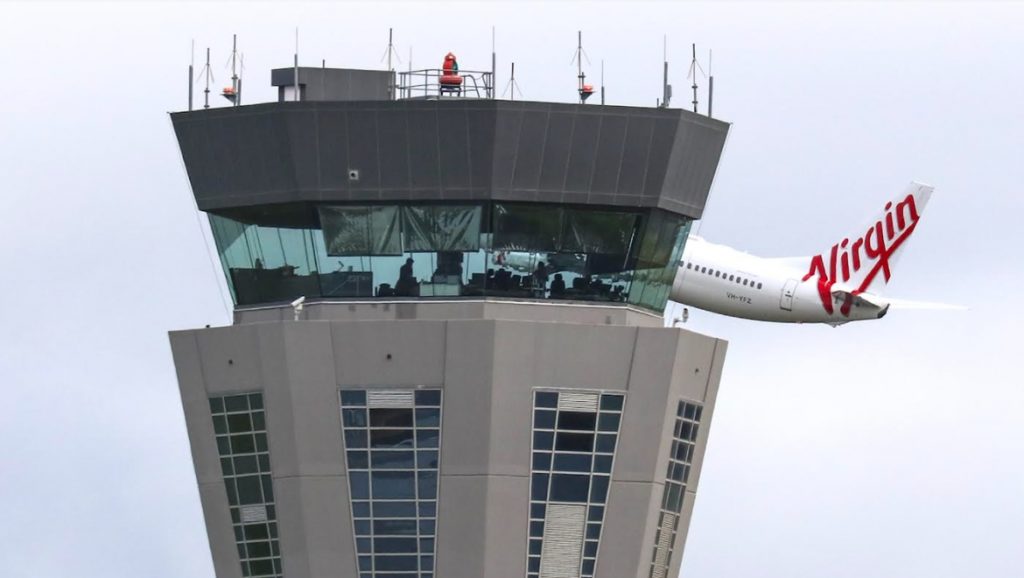
Regional airspace across Australia has been left without air traffic controllers due to staff shortages, driven by COVID isolation, flash flooding, and an underlying lack of trained workers.
According to a report by The Australian, air traffic controllers have been forced to “close” airspace increasingly often, due to not having adequate staff available, after 10 per cent of the workforce took up generous early retirement deals.
The issues have been exacerbated in recent months by flash floods in Queensland and NSW, as well as COVID-19 isolation requirements.
Since February alone, there have been 127 airspace closures throughout Australia, compared to just 107 for the entirety of 2021.
Regional areas in NSW, Queensland and Western Australia have been particularly hard-hit with closures, including Rockhampton to Mackay, the Sunshine Coast, Ballina and Byron Bay, Tamworth, Cairns, Coffs Harbour, Gwydir and Jandakot.
While aircraft can still operate without the aid of air traffic control, it means pilots must revert to “see-and-avoid principles”, and rely on radio communication, in order to maintain separations.
It comes after the Australian Transport Safety Bureau concluded just last month that “chance alone” prevented a collision between a packed Jetstar A320 and an amateur-built Jabiru J230D, after their flightpaths crossed near Byron Bay in November 2020.
Parts of the airspace around Byron Bay are non-controlled, and the ATSB found that the pilot on the Jabiru did not recall hearing broadcasts from the A320, while the crew of the A320 similarly did not recall hearing any broadcasts from the Jabiru.
“It becomes the responsibility of the flight crews to monitor and broadcast their position so then it’s a question of whether the individual operators or airlines are prepared to transit or fly through that airspace,” said Peter McGuane, executive secretary of the air traffic controllers’ union Civil Air.
“It would be a matter of company policy for the individual operators and the majority of those would certainly choose not to transit that airspace for safety reasons.”
McGuane stated that while COVID-related absences and flooding were both contributing to staffing issues in air traffic control towers, the largest problem remains a lack of skilled workers, after over 10 per cent of the ATC workforce accepted early retirement packages throughout 2020 and 2021.
According to McGuane, 130 controllers aged 56 and over accepted packages worth between $300,000 and $400,000.
“While we’re pleased that large numbers of our members were able to maximise their exit from the organisation after long careers, there is ongoing concern about the ability to manage staff shortages in those circumstances,” he said.
The staffing issue is also beginning to take its toll on employees who are being asked to work overtime and cover additional shifts, McGuane said, after Brisbane-based controllers clocked 67 hours of overtime in one week last month.
“It does have an impact on a person’s wellbeing,” he said. “You’ve not only got your work environment to deal with but the external factors and the question of work-life balance and it’s creating a tremendous amount of uncertainty and stress for people.”
“It’s a situation where we’ll be closely monitoring all those factors to ensure adequate numbers are achieved and maintained,” McGuane said.

















Adrian P
says:Perhaps it is time for airports to be allowed to directly employ their own controllers to provide aerodrome and approach services or utilise companies like Global Air Navigation Services (GANS) or National Air Traffic Services (NATS) as in other countries
Leaving Airservices Australia to provide enroute services.
Will Airservices Australia have the capacity to provide a service for the new runway at Melbourne?
Levin
says:Actually Mr McGuane, the Airlines quite happily fly through this dangerous airspace for the profit and assign little concern to the safety of it. It is the role of CASA, Air services and the airport owner to make it safe. Unfortunately after 3 near airline disasters in the last 7 years at Ballina, they are still ignoring the risks.
Bill Oreally
says:As long as money is cut from the budget and the bean counters are happy, ala QF and VA, all will be sweet at ASA. Saving money is the most important thing in life and business, and everyone is happy with the logical outcome of getting value out of that very last cent, and then some. What could go wrong, why cant people see the righteousness of this thinking?
Martin Renilson
says:Devonport is not controlled (and has not been for a long time, if ever) yet Qantas operates successfully into it.